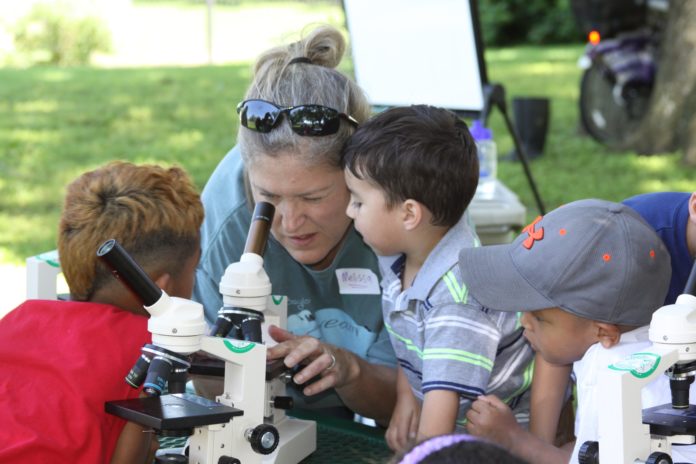
By Megan Hale | Reporter
Baylor’s Center for Reservoir and Aquatic Systems Research (CRASR) has greatly impacted both the Baylor and Waco communities by providing students and faculty with opportunities to make their mark on the world, in the lab and outside the classroom.
According to the CRASR website, CRASR is a water research center focused on ecology, ecotoxicology and aquatic ecosystems. CRASR also greatly emphasizes educational outreach by partnering with the Waco community, including the Lake Waco Wetlands.
“Our director here at CRASR, Dr. Robert Doyle, is a wetland ecologist, and he was instrumental in helping get the Lake Waco Wetlands built with the city of Waco,” Melissa Mullins, environmental education and outreach coordinator for CRASR, said. “That project is a partnership between Baylor and the city of Waco.”
Wetlands are transition zones between bodies of water and land, and they greatly benefit the environment, according to the CRASR research webpage.
“Aquatic resources are essential to both ecological function and a healthy, prosperous society,” the CRASR research webpage said.
According to the United Nation’s Climate Change Website, an estimated 35% of wetlands around the world were lost between 1970 and 2015. This rate has only accelerated over the years. Many of the plants and animals whose habitats thrive in wetland environments are now considered in danger. CRASR exists to raise awareness on these types of issues while also seeking solutions.
Mullins said losing wetlands can increase the likelihood of multiple negative natural effects.
“When wetlands are lost, we have more likelihood of extreme flooding, more food insecurity, water scarcity and biodiversity decline,” Mullins said. “They also are natural filters and are called nature’s kidney. They clean up water as it passes through them.”
CRASR is also involved in educational outreach in Waco through partnering with schools across Waco Independent School District. One of the ways CRASR does this is through its after-school girls science club. Through the club, middle school girls are immersed in the exciting world of science, technology, engineering and mathematics. They gain mentorship and guidance from Baylor undergraduate students.
“At every site where we run an after-school girls science club, I always hire two Baylor undergraduate female STEM majors to run that,” Mullins said. “So they’re really in charge of the club. I’m just their supervisor and help them get materials together.”
The Mayborn Museum and the Heart of Texas Master Naturalist Program are both partnered with CRASR as well. Once a month, CRASR hosts a Meet the Scientist event at the Mayborn Museum where students of all ages can meet with a CRASR scientist to learn about aquatic research in an engaging and hands-on way. Visitors also have the opportunity to participate in Citizen Science activities where they help test and monitor the water in the Brazos River.
The Heart of Texas Master Naturalist Program strives to train and educate volunteers on the importance of preserving natural resources and promoting service within their communities.
Although all research conducted by CRASR is focused on the study of water, students and faculty from various STEM disciplines including biology, chemistry, environmental science and geoscience work together to dive deep into the many mysteries of aquatic research.
“When you go to class, you are given material, you study it and you regurgitate it for a test, and that’s not how real life is,” Cridersville, Ohio, doctoral candidate Ashlynn Boedecker said. “When you’re doing research, you ask your own questions, you explore your own creativity, and I think you just learn so much more.”
Students can partner with CRASR through student worker positions and internships or by contacting professors directly for lab research opportunities.
“The biggest takeaway was being able to take complicated scientific topics and being able to translate those to the general public and specifically to kids,” former CRASR undergraduate intern Miranda Whaite said.
CRASR gives students a platform to see how education, science and research are directly impacting their local communities and the world around them.
“We support and facilitate education and community outreach programs that have impact locally, regionally and around the world,” the CRASR webpage said.





